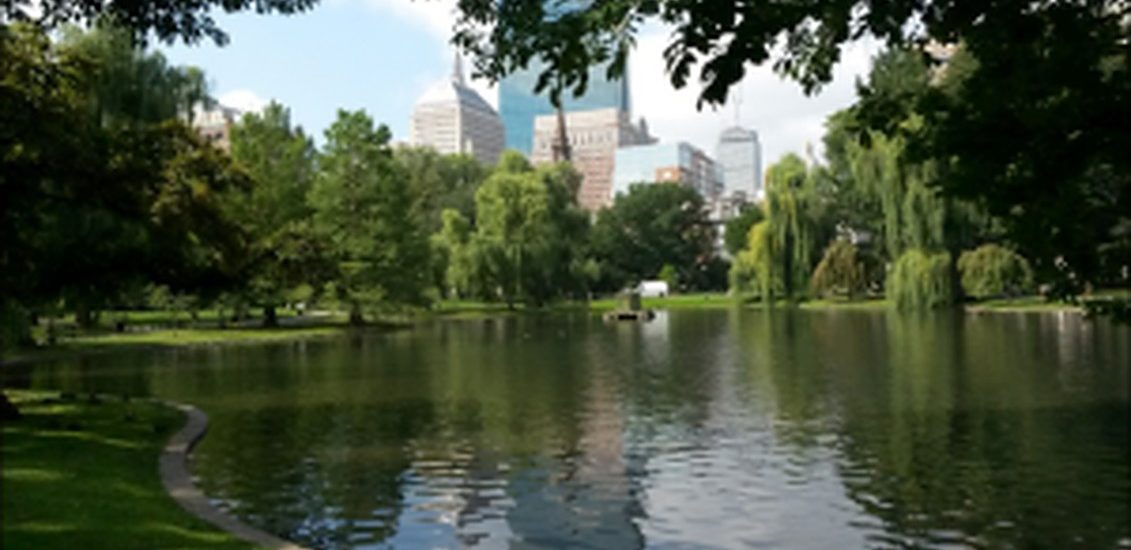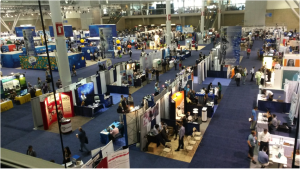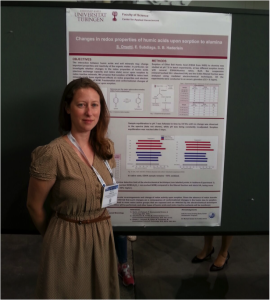
EAG Early Career Science Ambassador in 250th ACS in Boston

I had wanted to attend an ACS (American Chemical Society) meeting for many years. Thanks to the EAG Early Career Science Ambassador program I had the pleasure to be in Boston for the 250th ACS National Meeting & Exposition (16-20 August 2015), where I presented two posters at the Division of Environmental Chemistry.
This event comprehends many areas in Chemistry: from Organic to Environmental, from Computational to Teaching. Several thousands of scientists arrived to Boston and they had to organize their schedule thoroughly, since the conference took place in 4-5 locations besides the main Convention center. Most locations were near Boston Downtown, which is a beautiful and thriving area. We had great scientific discussions during lunch breaks in Common Park, surrounded by squirrels.
Of particular interest was the “Sci Mix” poster session, were a few selected works were presented in the late evening and scientific discussions were encourage by drinks, beer and popcorn. Besides this session I participated in the “normal” poster sessions; my posters showed my work on redox properties of Natural Organic Matter. I also attended a number of oral presentations of a variety of topics; I could hear about innovations in the food industry, water treatment, electrochemistry and, of course, geochemistry. The interdisciplinary character of this event was very attractive and particularly useful for net-working opportunities.
The Career Fair was held in parallel to the scientific program; members of the ACS could have mock interviews, feedback on resume writing and free resume photo shooting. Several companies were interviewing candidates on the spot, as well. The main Hall of the Convention Center was occupied by the Exposition; I was able to spot the latest upgrades of scientific instrumentation and I took home tons of useful contacts and information.
The EAG Ambassador Program gave me a great opportunity for which I’m deeply thankful. My years of “early scientist” are almost gone now, so I’ll recommend the program to my younger colleges working in Europe.
About the author
Silvia Orsetti is a Research Assistant at University of Tübingen (Environmental Chemistry and Mineralogy group). She investigates electron transfer processes in soil and water, in particular between natural organic matter and minerals. Her work focuses on assessing the reducing capacity of iron minerals as well as studying redox properties of natural organic matter in a variety of systems. She arrived in Germany after completing her PhD at University of Buenos Aires, where she worked on proton and metal binding to humic substances.

